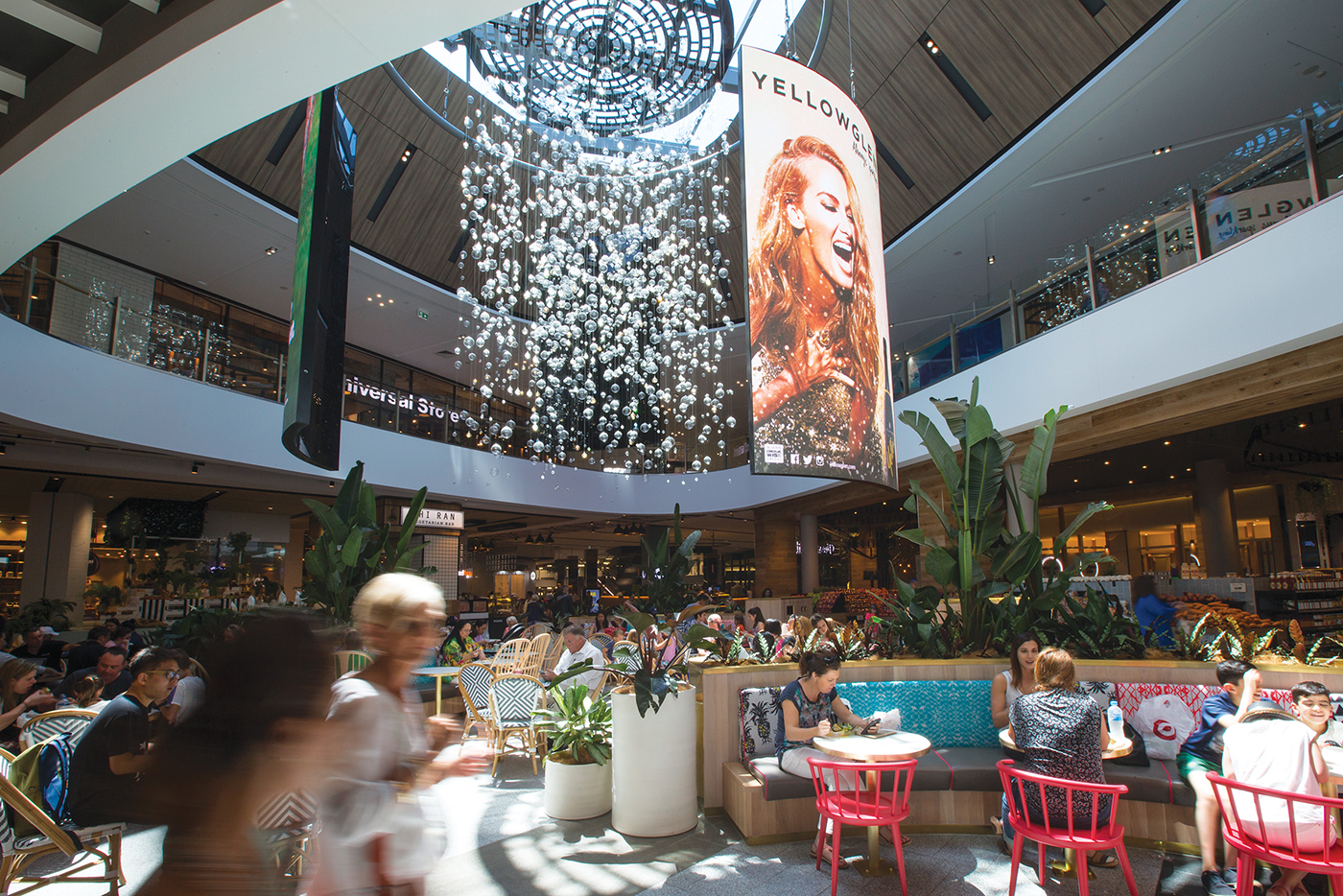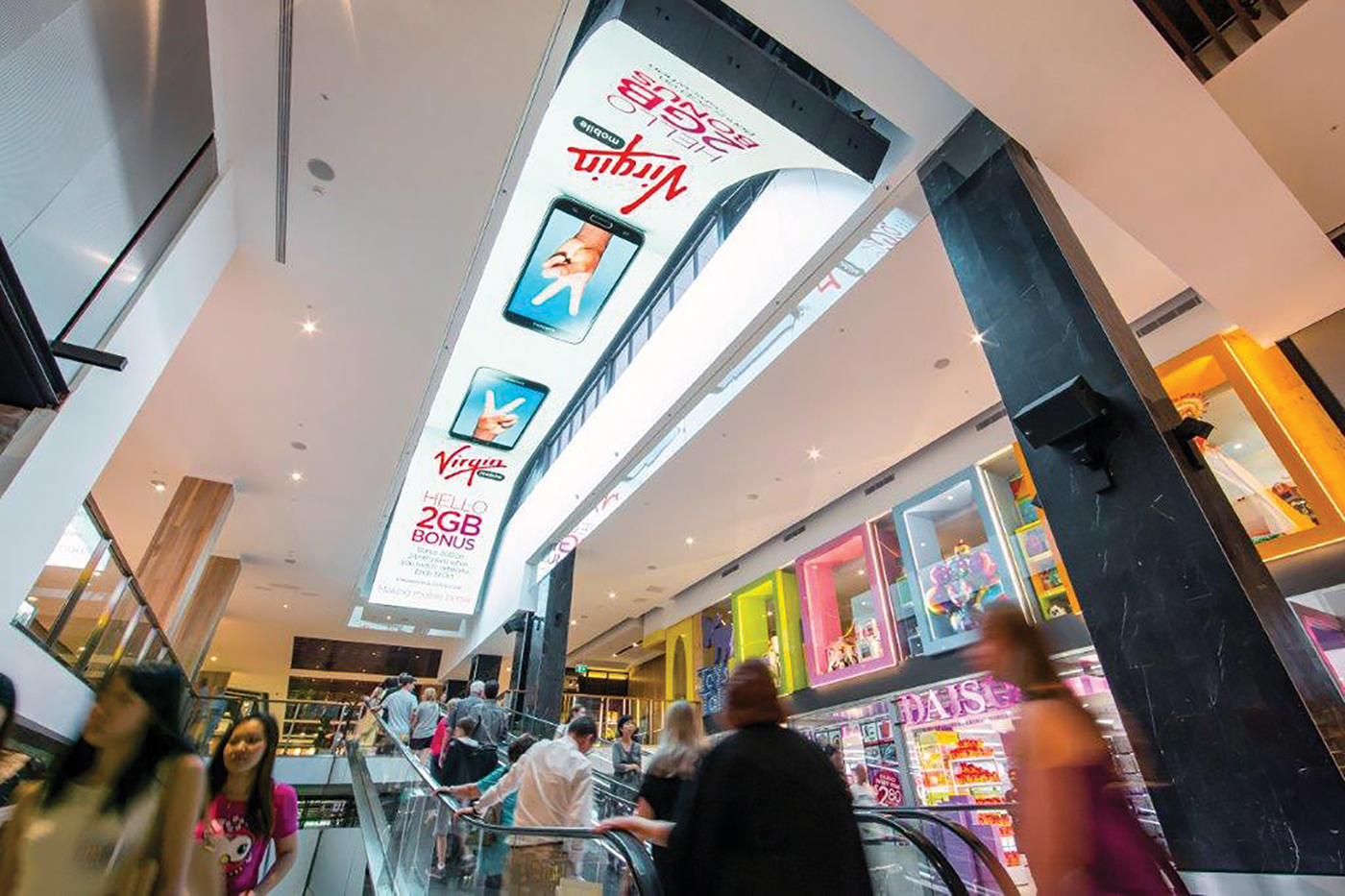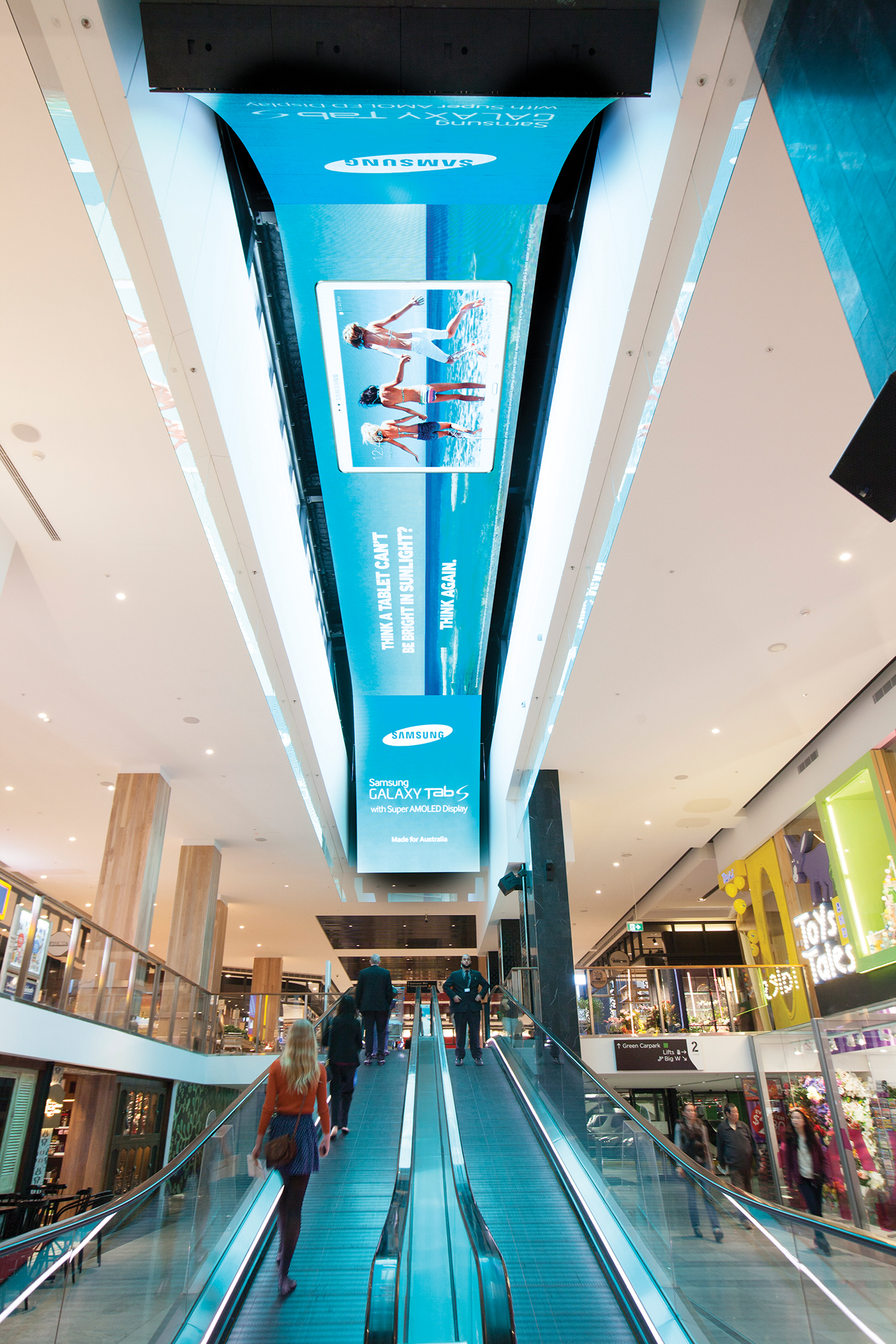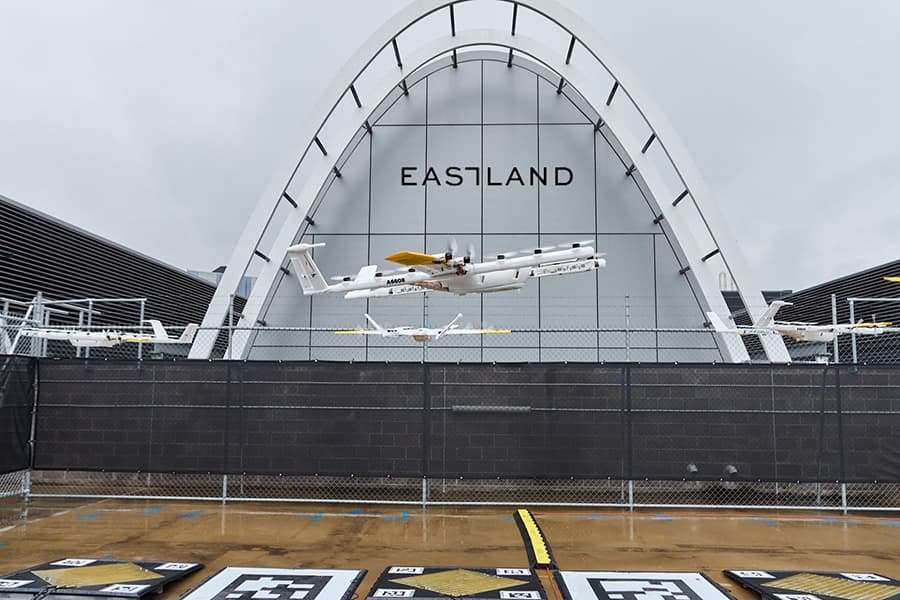Where do you stand on ‘digital display’ in your centre? Westfield embraced it some years ago and now has a full ‘in-house’ capability. AMP, GPT and others are devoting time, money and effort into the field. Do you think of it as a marketing tool, an information medium, a rentable space, a separate profit centre or all of the above? Two things are obvious; it’s here to stay and as yet, it hasn’t even started!
Demand for digital signage in mall spaces has never been higher, with the out-of-home media sector continuing to grow advertising revenue strongly, the benefits of placemaking digital content driving community engagement, and retailers moving from simple TV screens into seamless interactive digital canvases to attract shoppers.
Digital displays have been a feature in shopping malls since the first plasma and LCD panels were available to consumers, but now Australia is leading the world with some of the best digital display technology in the market.
Large-format LED displays are making a big impact on consumers in malls. Whether they be for advertising content, placemaking content, retailer engagement or a combination of all these opportunities, the adoption of seamless digital canvas is growing quickly.
Advertising
Advertisers are demanding high-impact digital sites in malls to promote their brands close to point of purchase. With the advent of large hanging digital banners, advertisers are embracing mall media as a marketing channel.
The opportunity to capitalise on unused air space was first developed by the major mall groups as a revenue-generating advertising channel. Westfield led the charge in Australia with their original digital banner network in late 2009.
Since then, digital display technology has evolved with finer-resolution displays providing high-definition content, enabling superbly integrated marketing campaigns from retailers, advertising agencies and mall marketing teams alike to deliver a ubiquitous and coherent marketing message.
During the calendar year of 2016, the retail sector of the out-of-home advertising market (OOH) has seen growth of more than 13% (year to date) according to figures released recently by the Outdoor Media Association (OMA). With digital advertising bookings now accounting for 39.8% of all OOH media revenue, this growth trend looks set to continue and digital bookings are likely to exceed 50% of all OOH retail sector advertising revenue by 2017.
The display technology has also changed, with high-impact digital displays no longer requiring large, heavy and bulky structures hanging from the mall roof. The days of major building redevelopment works required to support these assets are over.
The new lightweight technology opens up opportunities for small- and medium-sized malls to capitalise on the audience engagement of dynamic digital displays.
Placemaking / community engagement
The dynamic capabilities of digital displays provide more commercial opportunities than third-party advertising alone. Deploying a high-impact visual display can deliver a time-shared mall marketing channel for retailers, and mall promotion as well as community engagement content or a social media hub.
The advertising content mix is changing with mall owners ensuring shoppers have exposure to a combination of content choices, such as news and weather, mall specific marketing and promotional content as well as national advertising clients.
Some of the best examples of placemaking content in Australia are by the GPT group and AMP shopping centres. The GPT group malls share time with advertising content, and the local marketing teams have embraced the medium utilising this opportunity to promote mall activities such as tours around Melbourne Central or scheduled marketing events. At GPT’s Highpoint, kids’ activities and social media promotions have been developed and included within the content mix.
The AMP shopping centre group take a different approach, with the non-advertising display content providing an intrinsic sense of place to complement the environment of the mall, such as beach-to-hinterland content developed for the new Pacific Fair.
- The Resort, Pacific Fair, one of James’s career highlights was working on the Pacific Fair development
The value of utilising these assets to provide high-impact and low-cost promotion of retailers or community events gives malls a powerful broadcast communication medium to speak to their shoppers.
Malls can also create a ‘live’ content experience and share social media posts. Retailer Nike in Flatiron NYC has deployed a social media digital waterfall display, capturing and broadcasting social media content inside the retail store. Taking this into the mall space would deliver mall retailers and the mall marketing team with an internal broadcast platform to extend and amplify their social media campaigns across all consumers.
Smart displays and interaction
The Minority Report paradigm of signs greeting people as they pass by is available now.
The key benefit of a broadcast platform such as a digital display is that it can be seen by 100% of the audience, and provides a promotional medium for other audience engagement programs such as social media.
Beyond display visuals, the next horizon is the capability to turn banners, walls or even shelves into smart displays using proximity technology such as beacons, Bluetooth and near-field communications tags. Smart displays are capable of running internal applications. Audience measurement tools, proximity sensors and wayfinding prompts can be incorporated when developing a digital display strategy.
Mall media operators are also including interactive elements to floor-based inventory such as touchscreens. While actual consumer interaction is low in numbers, it provides marketers with a point of difference.
- Macquarie Centre
The top tips for digital display deployment:
1. Before ‘how do I do digital’, address the ‘why I need digital’ – There are lots of good reasons to implement a digital display strategy, from third-party advertising revenue to creating consumer place-making content or a leaseholders’ marketing channel. Nothing beats a coherent strategy for ‘why’ you want a digital display.
2. Audience context and content strategy – Consumption of digital media is evolving and the opportunities for audiences to browse digital content are ubiquitous, so having a content strategy that is aligned with the audience context is fundamental: broadly speaking static people – moving content, moving people – static content.
3. Feeding the content beast – The content strategy should include a program for regular content updates. Content ages quickly and stale content becomes less effective. Content updates need not be expensive. Fresh content maintains relevance of the message and shopper engagement.
4. Positioning – Displays need to be physically positioned for maximum consumer impact without compromising valuable tenants’ sight lines. Thin displays, rotating units and specialised rigging systems can assist utilise valuable airspace without compromising mall aesthetics.
5. Relevant image resolution – Selecting a resolution quality that will endure over the long life of an LED display is important. Unlike TV panels that deteriorate quickly, LED can provide effective commercial life beyond 8 to 10 years. Specifying a pixel pitch resolution that will retain relevance is achievable if considered early during the strategy development phase.
With the combination of increasing media interest in large mall advertising formats, the new easier-to-deploy, lightweight slimline digital display technology and the development of smart technology apps, the retail sector has changed markedly over the last 18 months and is expected to explode during 2017.
- Macquarie Centre






















